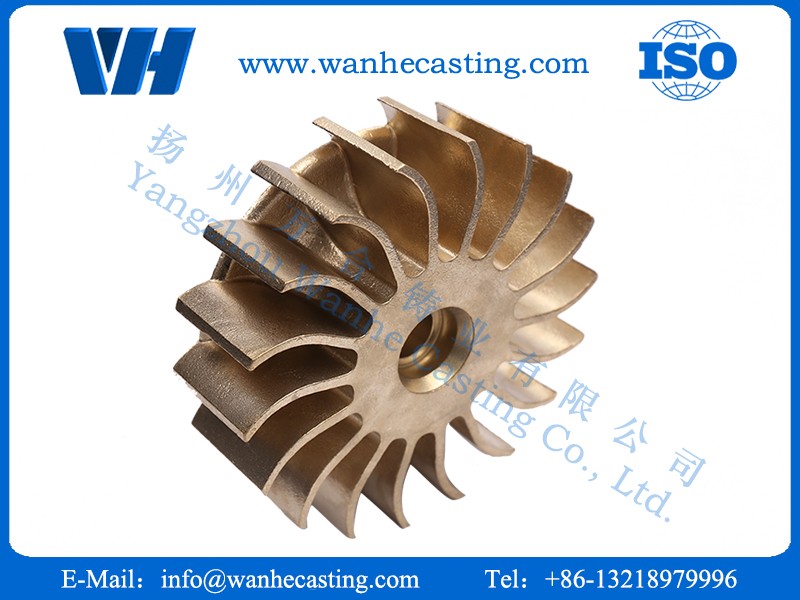
Author:Wanhe Time:2020-09-28 Clicks:15683
Copper castings and ordinary die castings are not easy to distinguish in appearance. The quality of the blank produced by the continuous casting and continuous forging process is similar to the "casting first and then forging" process. The first casting and then forging process is very common for us: the blank production requires two sets of molds, one for manual common metal mold casting, and the other One set is used for precision forging using friction punches or hydraulic presses.
The types of copper casting products are diversified, including automobiles, motorcycles, telecommunications, home appliances, hardware, power tools, IT, lighting, escalator steps, toy lights, etc. With the improvement of technical level and product development capabilities, the types and application fields of die-casting products continue to expand, and its die-casting equipment, die-casting molds and die-casting processes have undergone tremendous changes. Die-casting copper alloy Since its commercial production in 1914, die-casting copper alloys have developed rapidly with the development of the automobile industry and the invention of the cold chamber die-casting machine. Die-casting copper alloys can be divided into low and medium strength (such as China's Y102) and high strength (such as China's Y112) according to their properties. Yangzhou Wanhe Copper said that the current industrial applications of die-cast copper alloys mainly include the following series: AlSi, Al-Mg, Al-Si-Cu, Al-Si-Mg, Al-Si-Cu-Mg, Al-Zn, etc. .
The casting process of copper castings is used to solve the problem of copper slag, including the smelting of copper raw materials. It is characterized by adding a slag breaker and a refining agent during the smelting process. The machine pours the hot copper slag into the high temperature pot body through the oblique material port and stirs continuously. The copper liquid flows out from the bottom of the high temperature pot body and returns to the smelting furnace. The solid copper slag enters the cooling drum to cool, and the cooled solid The slag is classified by winnowing to obtain two kinds of coarse and fine slag. The coarse slag is returned to the smelting furnace, and the fine slag is used as the raw material for electrolysis production.

Copper casting core molding process matters needing attention:
1. For the thick parts of large copper castings, it is necessary to be very careful when setting risers on them to prevent the formation of process hot joints on the basis of the original hot joints. In the thick parts of the part, use cold iron The effect is often better than the effect of using the riser alone.
2. For ring-shaped or frame-shaped castings with thinner wall thickness, when the gating system is set in the center of the casting, the runner between the straight gate and the runner ring should be made into a broken line to prevent shrinkage Tensile stress causes deformation and cracks in the casting.
3. For large copper castings with more grids and partitions, it is necessary to avoid the defects of insufficient pouring. In addition to aligning the inner gate with the direction of the grid or partitions, the exhaust of the casting itself is also very important. Process elements.
4. In sand casting, for castings that are too large in size without a suitable sand box, and for castings with more than one surface with more complicated chambers, the method of grouping and core grouping can achieve better results.
5. The following four aspects should be grasped during core assembly modeling: the stability of sand core placement; the accuracy of sand core positioning; the operability of core assembly modeling; the compatibility of core assembly and other process elements. When forming the model, the sand should be enclosed outside the model sand block to prevent leakage.